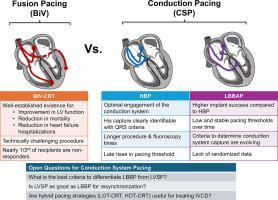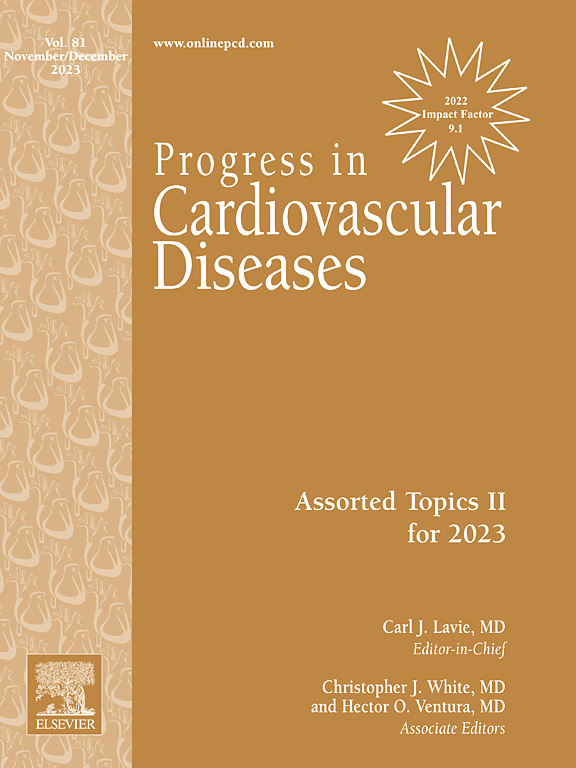The evolution of conduction system pacing and gaps in understanding
IF 7.6
2区 医学
Q1 CARDIAC & CARDIOVASCULAR SYSTEMS
引用次数: 0
Abstract
The field of cardiac pacing has changed dramatically since the first pacemakers were implanted in the 1950s.1 Over the ensuing decades, advancements in pacing technology have yielded longer battery life, smaller devices, sturdier leads, and more sophisticated pacemaker programming. Cardiac resynchronization therapy (CRT) represented a significant revolution in pacing approach, with the goal of correcting interventricular dyssynchrony through biventricular pacing. More recently, conduction system pacing (CSP) has emerged as a means to deliver even more physiological activation through direct engagement of the conduction system. The enthusiasm for CSP, driven primarily by investigator-initiated studies, has led to a rapid evolution in our understanding of conduction system physiology and represents a contemporary paradigm shift in our approach to treating patients with bradyarrhythmias and heart failure. The goal of this review is to provide a brief overview of the progression of CSP over time and to highlight key gaps in our understanding that need to be resolved prior to moving forward (Graphical Abstract).

传导系统的演化与认识上的差距。
自20世纪50年代植入第一批心脏起搏器以来,心脏起搏领域发生了巨大变化在接下来的几十年里,起搏器技术的进步带来了更长的电池寿命、更小的设备、更坚固的引线和更复杂的起搏器编程。心脏再同步化治疗(CRT)代表了起搏方法的重大革命,其目标是通过双心室起搏纠正室间非同步化。最近,传导系统起搏(CSP)已经成为一种通过直接参与传导系统来传递更多生理激活的手段。对CSP的热情,主要是由研究者发起的研究驱动的,导致了我们对传导系统生理学的理解的快速演变,并代表了我们治疗慢速心律失常和心力衰竭患者方法的当代范式转变。本综述的目的是简要概述CSP随着时间的推移的进展,并强调我们理解中需要解决的关键差距(图形摘要)。
本文章由计算机程序翻译,如有差异,请以英文原文为准。
求助全文
约1分钟内获得全文
求助全文
来源期刊

Progress in cardiovascular diseases
医学-心血管系统
CiteScore
10.90
自引率
6.60%
发文量
98
审稿时长
7 days
期刊介绍:
Progress in Cardiovascular Diseases provides comprehensive coverage of a single topic related to heart and circulatory disorders in each issue. Some issues include special articles, definitive reviews that capture the state of the art in the management of particular clinical problems in cardiology.
 求助内容:
求助内容: 应助结果提醒方式:
应助结果提醒方式:


